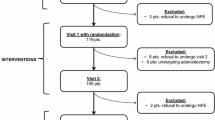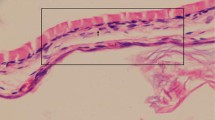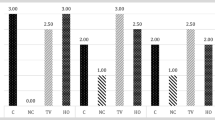Abstract
Objective: The administration of exogenous hyaluronic acid can increase the repair potential of damaged tissue. This study was conducted to verify whether or not the hyaluronic acid enhances the repair process in perforations of tympanic membrane. Hyaluronic acid is commercially available as its sodium salt.
Study Design: Thirty patients with dry central perforations of small or medium size (up to 3 mm) were treated locally with 1% sodium hyaluronate. The applications were repeated weekly for a maximum of five applications.
Results: It was found that treatment with sodium hyaluronate helps appreciably in the closure of tympanic membrane perforations and also that the scar formed in majority of them resembled the normal tympanic membrane. 86.67% (26/30) of the patients responded positively to the treatment. More importantly overall average percentage reduction in the size of perforations was 86.49%.
Conclusions: It was concluded that topical application of 1% sodium hyaluronate can be an alternative to surgery in selected cases of tympanic membrane perforations.
Similar content being viewed by others
References
Stenfors, L.E., Berghem, L., Bloom, G.D., Hellstrom, S. andSoderberg, O. (1985):Exogenous hyaluronic acid (Healon) accelerates the healing of experimental myringotomies.Auris Nasus Larynx 12:214–5.
Stenfors, L.E. (1989):Repair of tympanic membrane perforations using hyaluronic acid: An alternative to myringoplasty.J Laryngol Otol 103:39–40.
Laurent, C., Soderberg, O., Anniko, M. andHartwig, S. (1991):Repair of chronic tympanic membrane perforations using application of hyaluronan or rice paper prostheses.ORL J Otorhinolaryng Relat Spec 53(1):37–40.
Rivas Lacarte, M.P., Casasin, T., Pumarola, F andAlonso A. (1990):An alternative treatment for the reduction of tympanic membrane perforations: sodium hyaluronate. A double blind study.Acta Otolaryngology 110(1–2):110–4.
Rivas Lacarte, M.P., Casasin, T. andAlonso A. (1992):Effects of sodium hyaluronate on tympanic membrane perforation.J Int Med Res 20(4):353–9.
Kumar, S. andGupta, A.K. (1995):Closure of persistent central perforation of tympanic membrane using 1% Hyaluronic acid.IJO & HNS 47(2):127–131.
Lindahl, U andHook, M. (1978):Glucosaminoglycans and their binding to biological macromolecules.Ann Rev Biochem 47:385–417.
Camarda, V, Carvelline, M., Pedace, G andPace, M. (1989):Sodium hyaluronate in the repair of perforations of the tympanic membrane.Clin Ther 11(6):744–54.
Hellstrom, S. andLaurent, C. (1987):Hyaluronan and healing of tympanic membrane perforation — An experimental study.Acta Otolaryngology 442:54–61.
Hellstrom, S, Bloom, G.D., Berghem, L., Stenfors, L.E., andSoderberg O. (1991):A comparison of hyaluronan and fibronectin in the healing of tympanic membrane perforations.Eur Arch Otorhinolaryngol 248(4):230–5.
Author information
Authors and Affiliations
Rights and permissions
About this article
Cite this article
Kaur, K., Singh, H. & Singh, M. Repair of tympanic membrane perforation by topical application of 1% sodium hyaluronate. Indian J Otolaryngol Head Neck Surg 58, 241–244 (2006). https://doi.org/10.1007/BF03050829
Issue Date:
DOI: https://doi.org/10.1007/BF03050829




